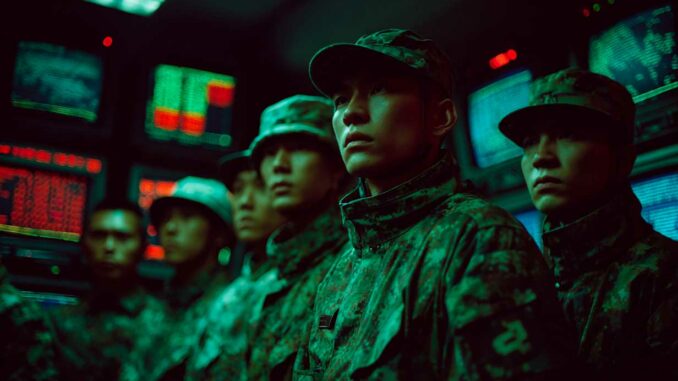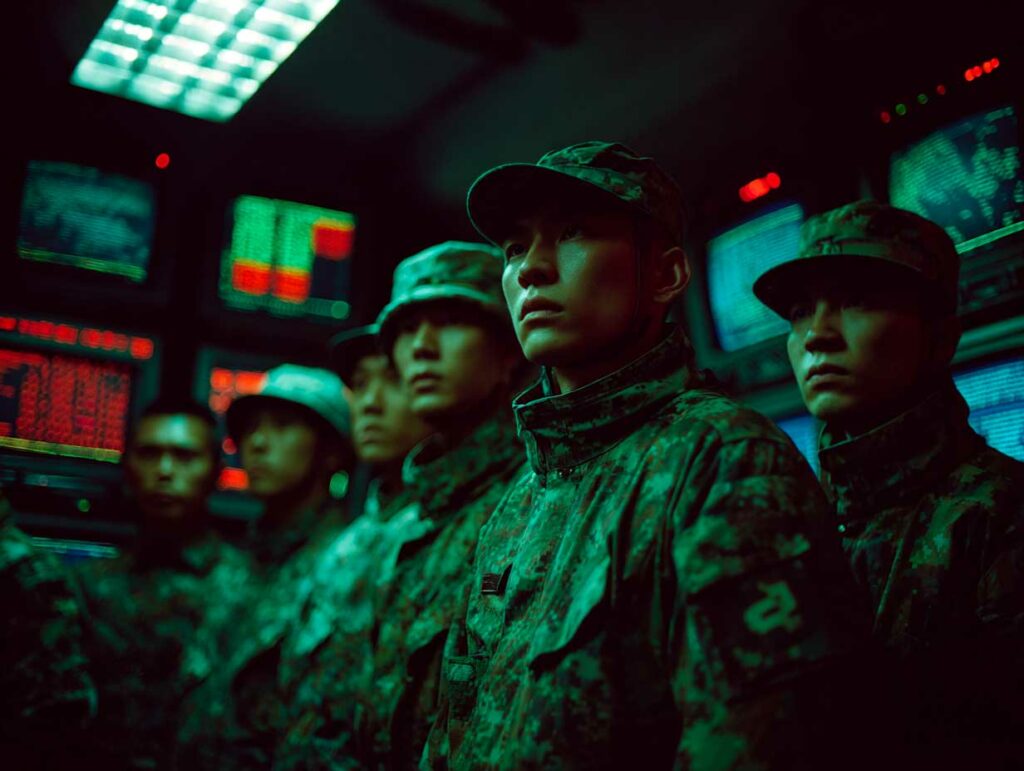
Taiwan simulates a Chinese attack in its Han Kuang 2025 exercises, mobilizing HIMARS and cyber defense to strengthen its deterrence strategy.
On July 9, 2025, Taiwan began the Han Kuang exercise, the largest annual military simulation ever conducted by the island’s armed forces. These maneuvers are intended to test the country’s resilience in the event of a Chinese attack on its command centers, logistics networks, and critical infrastructure. The geopolitical context is tense: the People’s Republic of China continues to reject any military cooperation between Taiwan and the United States, calling the exercises a “provocative act.”
This 2025 edition marks a notable development: Taiwan has incorporated complex hybrid attacks into its scenarios, combining ballistic strikes, cyberattacks, and electronic warfare. Advanced weapons systems such as the HIMARS rocket launchers supplied by the United States are being mobilized in live-fire demonstrations. The stated objective is twofold: to strengthen response capabilities in the event of an invasion and send a clear signal to Beijing about the island’s ability to resist.
However, public confidence in defense capabilities remains moderate: a 2024 poll shows that 47.5% of Taiwanese citizens believe their army is ready to face a Chinese offensive. The Han Kuang exercise therefore also plays a psychological role: reassuring the population and demonstrating that Taiwan is seriously preparing its defenses, despite growing threats from mainland China.
A scenario of total war focused on internal resilience
Simulated attacks on vital state centers
The Han Kuang 2025 exercise is based on a large-scale attack simulation targeting Taiwan’s political and military apparatus. The scenarios include initial strikes against the armed forces headquarters in Taipei, the Ministry of Defense’s communications sites, military airports, and the island’s energy centers. The simulations were carried out with a high degree of realism, involving deliberate interruptions to communications and power supplies for several hours.
The critical phase of the maneuvers focuses on continuity of operations in a degraded environment, a concept modeled on US operational resilience doctrines. Emergency command centers located in the central mountains were activated as part of a command chain redeployment exercise. This strategy aims to anticipate the immediate neutralization of decision-making nodes by precision strikes, such as those used by Russia against Ukraine since 2022.
Testing the logistics network
The Taiwanese military also tested its capabilities to provide ammunition, fuel, and emergency equipment in the event of a partial naval blockade of the Taiwan Strait. Land convoys were simulated to supply units in peripheral areas, with tactical rotations every eight hours. According to the Ministry of Defense, 95% of the simulated logistical objectives were achieved within the allotted time frame. However, this rate, while considered satisfactory, masks inter-service coordination flaws in the maritime transport segment, which has been identified as vulnerable.

Greater integration of US systems into Taiwan’s arsenal
Use of HIMARS in real conditions
One of the most notable operational innovations of the Han Kuang 2025 exercise was the full integration of HIMARS (High Mobility Artillery Rocket System). This precision-guided rocket system, supplied by the United States since 2022, was tested on Taiwan’s southern coast. Capable of striking targets up to 300 kilometers away, HIMARS was used in simulated firings targeting enemy amphibious assault ships approaching Kaohsiung.
The Taiwanese army has confirmed that it has mobilized 12 operational HIMARS units, integrated into the 21st Mobile Artillery Brigade. Each battery has six GMLRS (Guided Multiple Launch Rocket System) guided rockets. The total cost of the HIMARS program, including maintenance and training, amounts to nearly €1.5 billion according to the Taiwanese Ministry of Defense. These mobile and discreet systems are considered essential to counter an amphibious offensive from Chinese coastal areas.
A defense architecture geared towards interoperability
Taiwan is also investing in the compatibility of its systems with US military equipment. The Taiwanese C4ISR (Command, Control, Communications, Computers, Intelligence, Surveillance and Reconnaissance) system has been tested with encrypted satellite links via mobile stations. The aim is to enable partial integration in the event of US intervention, even if limited, without requiring a permanent presence on the territory.
Chiayi Air Base hosted joint simulated exercises involving F-16V Block 70 aircraft and MQ-9B SkyGuardian drones. This coordination is preparing for maritime interception and surveillance missions, as part of a partial siege scenario of the island by the Chinese navy. These tests underscore a clear priority for Taiwan: to maintain a viable tactical network even in a situation of international isolation.
A strategic climate dominated by Chinese pressure
A predictable and firm response from Beijing
As in previous editions, the Chinese Ministry of Foreign Affairs immediately condemned the Han Kuang exercises. Beijing considers any joint maneuver involving US equipment to be a violation of the one-China principle. The ministry spokesman said that these actions “increase the risk of military confrontation in the strait .” At the same time, the Eastern Theater Command of the PLA (People’s Liberation Army) conducted live-fire naval exercises around the Pescadores Islands as a political signal.
On the diplomatic front, China is attempting to discredit military cooperation between Taiwan and the United States among Southeast Asian countries. Beijing claims that these maneuvers are “militarizing the region” and has summoned the US ambassador to Beijing to lodge an official protest. The goal remains the same: to weaken Taiwan’s international legitimacy and isolate the island in multilateral forums.
Public opinion torn between support and resignation
Despite the increasing frequency of alerts and military tensions, the Taiwanese population’s confidence in its armed forces remains moderate. According to a survey by National Chengchi University, 47.5% of respondents believe that the army could withstand an initial attack, but only 28% think that the island could hold out without outside help for more than 30 days. These figures illustrate a latent concern about Taiwan’s real military autonomy.
Aware of this perception, the government has opened several public observation sessions during the Han Kuang maneuvers. Footage of missile launches and special unit interventions has been broadcast in the local media. This transparency aims to reinforce the deterrent effect on Beijing while maintaining minimal citizen mobilization. In the short term, the exercises also serve to show allies that Taiwan is prepared to assume a share of regional defense, despite the glaring asymmetry with China.
War Wings Daily is an independant magazine.